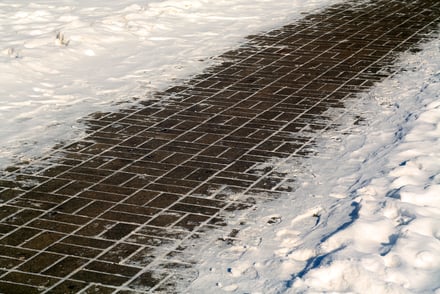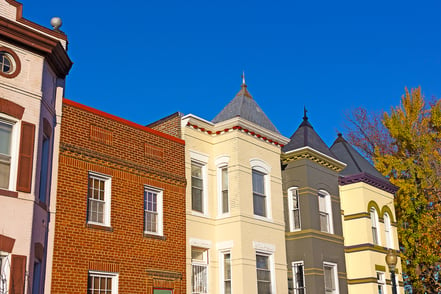Many people purchase or inherit older homes that have layers of stucco covering an older brick and mortar exterior. For those who desire to remove the stucco to reveal the brick and mortar underneath, be forewarned that this is a huge undertaking that requires lots of time and effort.
While we don’t recommend that any homeowner undertake this kind of project without the help of a professional, there is a process to follow that we will outline here. Do not begin without understanding the effort required and what you might discover under the surface..
Why Was Brick Covered with Stucco?
Before you begin pounding away at layers of stucco, you may want to investigate the reasons a home or building owner would want to cover a brick and mortar exterior. For some, it was likely the appeal of trying something new. Stucco did enjoy a period of popularity as an exterior aesthetic choice, and many flocked to cover their home or building in the latest trend.
For others, stucco may have seemed like a way to avoid tuckpointing. When the mortar between old bricks deteriorates (as it will over time), tuckpointing is the process of removing and replacing it to prevent further erosion and moisture intrusion. If this is why your brick was covered with stucco, you will almost certainly uncover deterioration that has gotten even worse.
Older (pre-1930) brick and mortar homes were constructed with materials that were different than those that were mass produced later. The consistency of mortar must match the age and porosity of the bricks. Older bricks are softer and more porous than bricks manufactured after 1930 or so; they - forever - require a mortar that will let them breathe and shift with changes in temperature and moisture.
As this older material eroded over time, many may have thought that sealing it over completely with stucco was faster and more cost-effective than proper tuckpointing. You may discover as you begin removing the stucco that this remedy did not protect the brick and mortar, but caused more harm instead. If you get this far and discover more damage than you imagined, this would be the time to get a professional involved.
How Can I Remove the Stucco?
The process of removing stucco from underlying brick and mortar is simple, but not at all easy. Always select a small, hidden area to begin, to get an idea of how the process will go. That way, if you decide to leave the stucco intact, you do not have a glaring space on the side of your home where the stucco has been visibly damaged.
Be sure to wear the appropriate safety equipment as you work, including gloves and eye protection. Hammer lightly on a small area of stucco in a hidden area to break it up and loosen it from the brick. Use a hammer and chisel or a crowbar to gently force away loosened pieces of stucco.
If you encounter a layer of wire mesh, stop immediately. This means wire mesh has been used to cover the surface of the brick to help hold on the stucco. Your brick surface will likely be covered with nail holes and require replacement if you remove the stucco.
If no wire mesh is present, you may continue removing the stucco. Clean away residual stucco from the brick and mortar with a wire brush, but do not use force. Slower, methodical strokes will wear away the stucco and preserve more of the bricks’ surface. You will likely require extensive repairs to the existing brick and mortar to preserve and protect your building.
Brick and Mortar Building Preservation Specialists
At Renaissance Development in Washington, DC, we are your local specialists at preserving older brick and mortar buildings from the early 20th century and before. We have the knowledge, expertise and equipment to refurbish your brick and mortar building, even if it is covered in stucco.
Why not leave such a huge job to the professionals instead of risking even more damage to your building? Call us at 202-547-2345 or message us online about your brick and mortar building challenges.
Jan 13, 2020 6:30:00 PM


